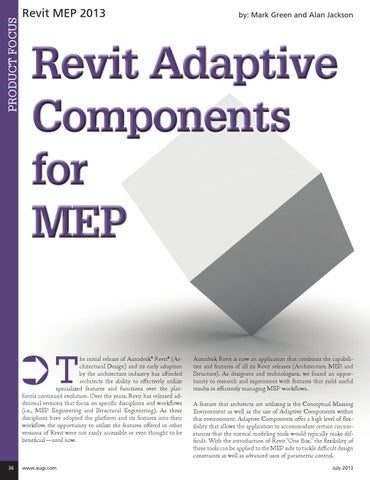PRODUCT FOCUS
Revit MEP 2013
Revit Adaptive Components for MEP ➲T
he initial release of Autodesk® Revit® (Architectural Design) and its early adoption by the architecture industry has afforded architects the ability to effectively utilize specialized features and functions over the platform’s continued evolution. Over the years, Revit has released additional versions that focus on specific disciplines and workflows (i.e., MEP Engineering and Structural Engineering). As these disciplines have adopted the platform and its features into their workflow, the opportunity to utilize the features offered in other versions of Revit were not easily accessible or even thought to be beneficial—until now.
36
by: Mark Green and Alan Jackson
www.augi.com
Autodesk Revit is now an application that combines the capabilities and features of all its Revit releases (Architecture, MEP, and Structure). As designers and technologists, we found an opportunity to research and experiment with features that yield useful results in efficiently managing MEP workflows. A feature that architects are utilizing is the Conceptual Massing Environment as well as the use of Adaptive Components within this environment. Adaptive Components offer a high level of flexibility that allows the application to accommodate certain circumstances that the normal modeling tools would typically make difficult. With the introduction of Revit “One Box,” the flexibility of these tools can be applied to the MEP side to tackle difficult design constraints as well as advanced uses of parametric control. July 2013
